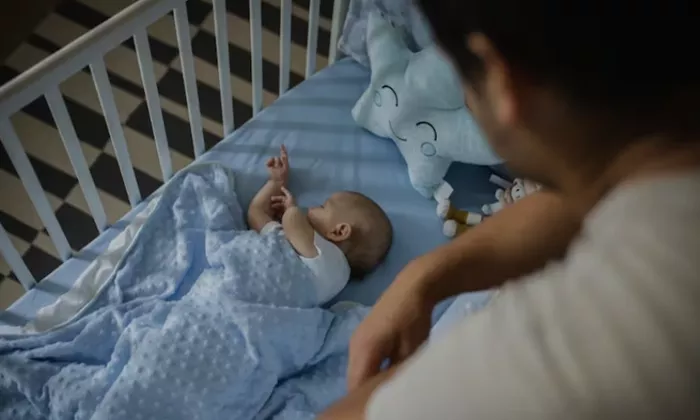A recent study published in Environmental Science & Technology Letters has raised concerns about the levels of potentially harmful chemicals in children’s mattresses and sleeping environments in Canada. The research reveals that mattresses and the air within sleeping microenvironments (SMEs)—the space surrounding a child while they sleep—contain higher concentrations of certain chemicals than the bedroom air itself. The study’s authors are calling for more stringent chemical regulations and practical measures to reduce children’s exposure to these substances.
Study Overview
The research team focused on the presence of semi-volatile organic compounds (SVOCs) in children’s sleeping environments, particularly in mattresses, bedding, and the air within SMEs. These chemicals, often linked to products like foam and flame retardants, have been associated with health risks such as hormonal disruption and asthma. Given children’s heightened vulnerability—due to behaviors like mouthing objects and their increased skin surface area relative to body weight—the study emphasizes the need for tighter control over these chemicals.
While Canadian regulations allow for the use of physical barriers or tight-weave fabrics to meet mattress flammability standards, many manufacturers still use potentially harmful substances like tris(chloropropyl phosphate) (TCPP) in foam. This practice has been linked to increased exposure in young children, particularly in their sleeping environments.
Methodology
Between 2022 and 2023, the study followed 21 parents with 25 children aged six months to four years in Ottawa and Toronto, focusing on middle- to high-income households. The team used passive samplers in children’s bedrooms, including mattress, SME, and room air samplers, to measure the presence of 51 SVOCs. The study also incorporated chemical analysis techniques, such as chromatography-mass spectrometry (GC-MS), to identify 14 UV filters, 29 organophosphate esters (OPEs), and 8 phthalates (PAEs) within the collected samples.
The study’s authors note some limitations, including the relatively short sampling period and small sample size, which could affect the precision of exposure estimates. However, the data provides valuable insights into the chemical composition of children’s sleep environments.
Key Findings
The study found that several harmful chemicals, including TCPP and diethyl phthalate (DEP), were prevalent in both the mattresses and the air surrounding children while they sleep. Notably, UV-328, a chemical recently banned for its persistence, was detected in 28% of the bedrooms, likely originating from UV-protected curtains or carpets. Higher concentrations of SVOCs were typically found in SME samplers, which suggests that the sleeping microenvironment is a significant source of exposure for children.
While some of these chemicals, like benzophenone (BP) and diisobutyl phthalate (DiBP), were detected at higher concentrations in children’s bedrooms compared to controlled office settings, the study emphasizes that multiple sources contribute to overall exposure. Notably, older mattresses were found to correlate with higher levels of certain chemicals, such as di-2-ethylhexyl phthalate (DEHP), further complicating the identification of a primary source.
Implications for Regulation and Public Health
The findings of this study underline the need for more comprehensive regulations addressing chemicals in children’s sleeping environments, such as mattresses, bedding, and textiles. Many of the chemicals identified in the study, including PAEs and flame retardants, have been linked to health risks in children, yet these substances remain prevalent in household products. The study’s authors advocate for a broader regulatory framework that extends beyond toys and limited product categories to include textiles, furniture, and mattresses.
Additionally, the study highlights the persistence of certain chemicals in children’s environments, with a time lag often observed between regulatory changes and noticeable reductions in exposure. This underscores the urgency for proactive policy changes and increased public awareness.
Recommendations for Parents
To mitigate exposure, parents are advised to choose flame-retardant-free mattresses and avoid vinyl-covered products, which were found to be significant sources of phthalates like DnBP. The study also recommends reducing the number of bedding items, frequently washing textiles, and avoiding mattress protectors that may contain harmful chemicals like per- and polyfluoroalkyl substances (PFAS).
Overall, this research highlights the urgent need for enhanced chemical safety in children’s sleep environments. With children spending a significant amount of time sleeping, especially during critical developmental years, reducing exposure to harmful chemicals is essential for protecting their long-term health.
This study serves as a call to action for manufacturers, regulators, and parents alike to prioritize children’s safety by eliminating toxic chemicals from sleeping environments and ensuring stricter enforcement of safety standards.
Related topics:
Sleep Boosts Long-Term Memory for Life Events
Early-Life Ozone Exposure Linked to Higher Asthma Risk in Children
Genetic Link Between Sedentary Behavior and Cardiovascular Risk


